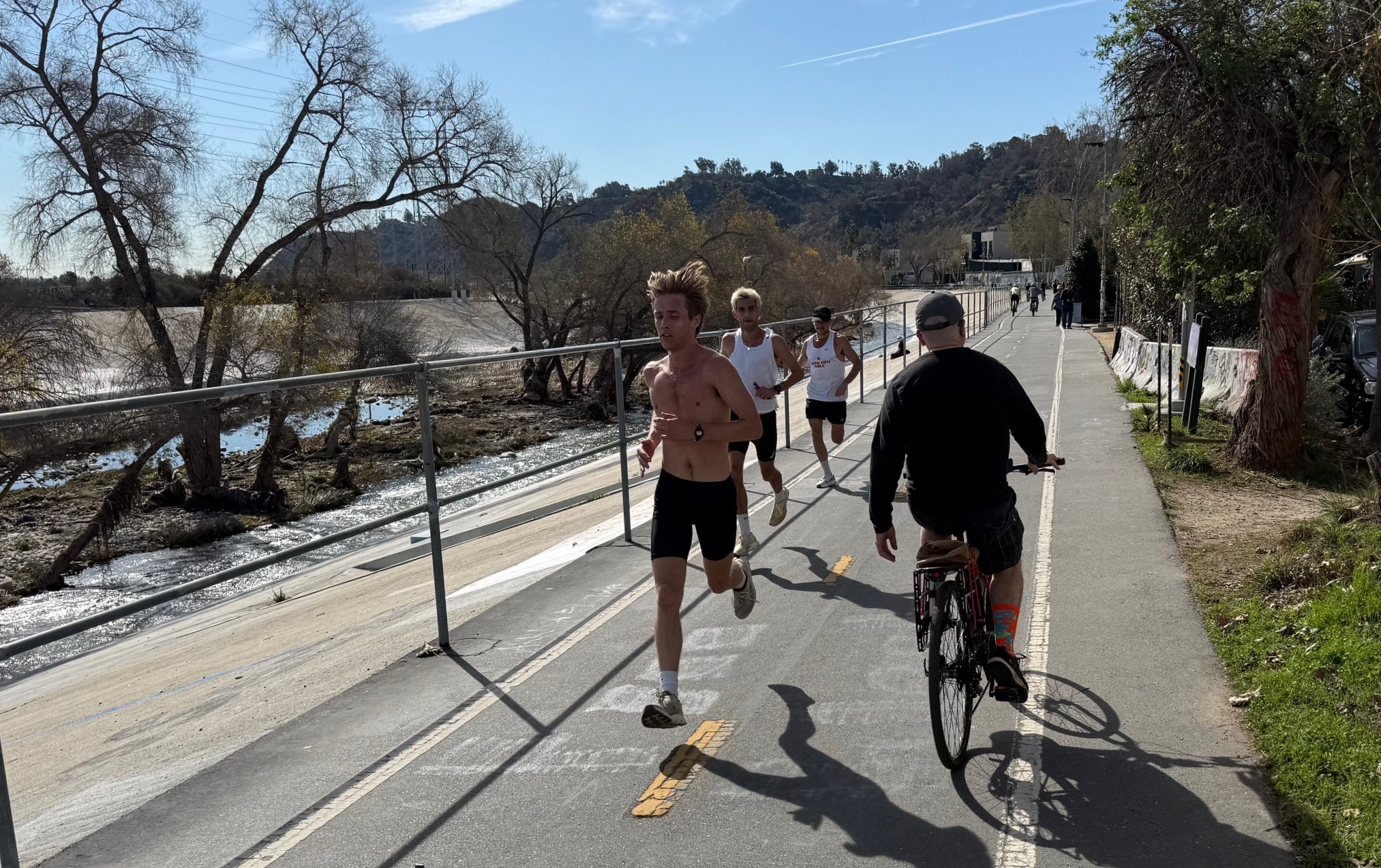The connection between transportation and public health has slowly
edged into the mainstream since Streetsblog Capitol Hill began covering
it last year, first through a billion-dollar grant program added to Congress' sprawling health care bill and now in a Centers for Disease Control (CDC) brief that connects existing U.S. infrastructure with chronic disease, obesity, and premature deaths.
 President Obama, shown biking with his daughters -- one of the CDC's recommendations to enhance public health. (Photo: AP via Politico)
President Obama, shown biking with his daughters -- one of the CDC's recommendations to enhance public health. (Photo: AP via Politico)The
CDC brief, quietly released late last month, offers seven
recommendations aimed at making public health a greater priority for
transportation policymakers:
- Pass road safety laws, such as those requiring child safety harnesses and prohibiting texting behind the wheel;
- Increase funding for air quality improvement projects and clean diesel projects that limit vehicle emissions;
- Encourage more transit-oriented development and transit expansion;
- Requirestreetscapes to be designed for bicyclists and pedestrians as well asdrivers, the principle known as "complete streets";
- Support local planning and zoning rules that promote mixed-use construction in denser neighborhoods;
- Revamp road design practices to minimize auto speeds and increase pedestrian and bicyclist safety;
- Increase data collection and research about the transportation-health relationship
In addition, the CDC outlines the grim consequences that can be expected from the nation's transportation status quo:
- Physical activity and active transportation have declinedcompared to previous generations. The lack of physical activity is amajor contributor to the steady rise in rates of obesity, diabetes,heart disease, stroke and other chronic health conditions in the UnitedStates.
- Motor vehicle crashes continue to be the leadingcause of injury-related death for many age groups. Pedestrians andbicyclists are at an even greater risk of death from crashes than thosewho travel by motor vehicles.
- Many Americans view walkingand bicycling within their communities as unsafe because of traffic andthe lack of sidewalks, crosswalks, and bicycle facilities.
- Althoughusing public transportation has historically been safer than highwaytravel in light duty vehicles, highway travel has grown more quicklythan other modes of travel.
- A lack of efficientalternatives to automobile travel disproportionately affects vulnerablepopulations such as the poor, the elderly, people who have disabilitiesand children by limiting access to jobs, health care, socialinteraction, and healthy foods.
- Although motor vehicleemissions have decreased significantly over the past three decades, airpollution from motor vehicles continues to contribute to thedegradation of our environment and adverse respiratory andcardiovascular health effects.
- Transportation accounts for approximately one-third of all U.S. greenhouse gas emissions contributing to climate change.






